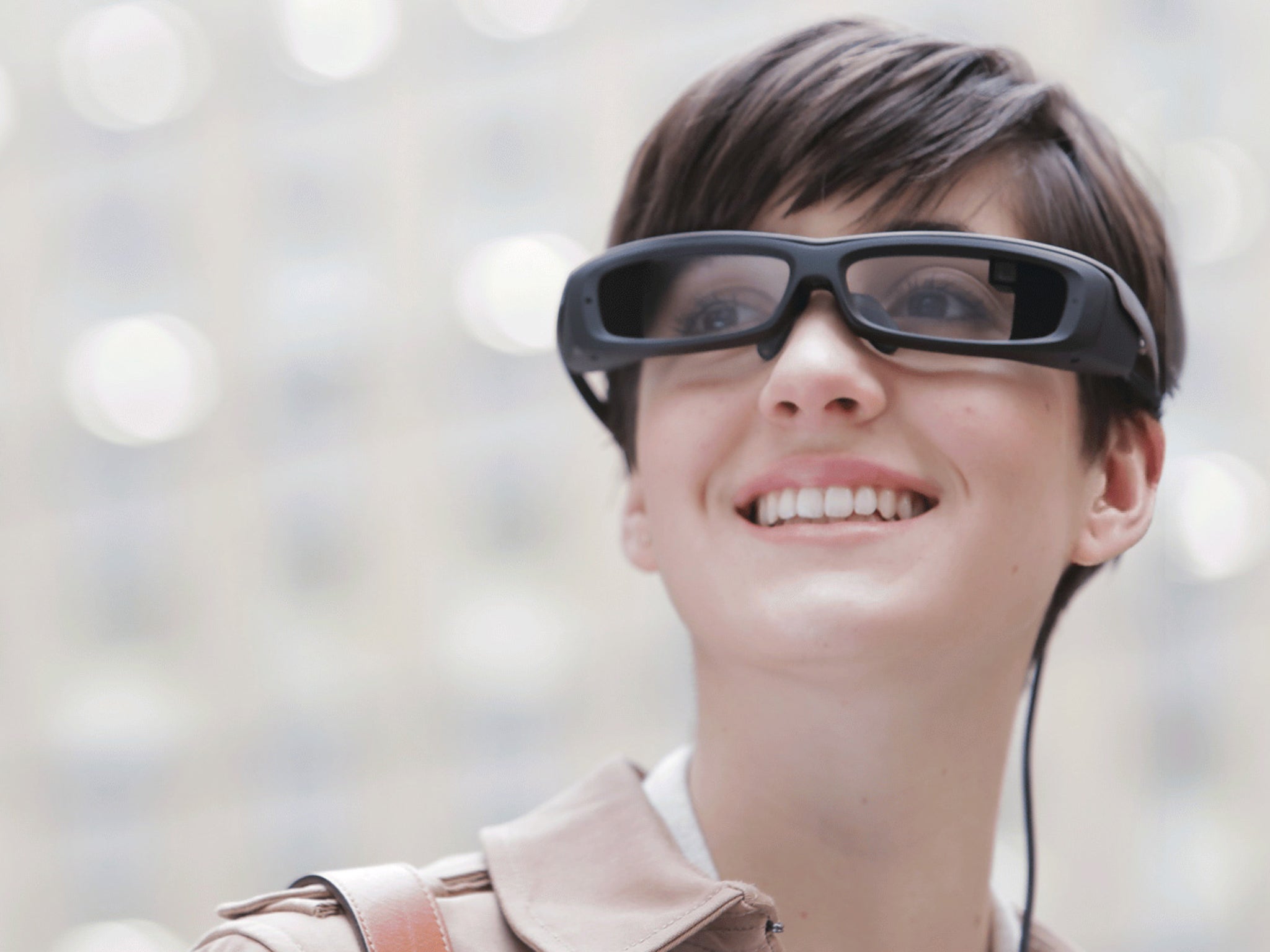Sony launches smart glasses — weeks after Google pulls its own attempt
Like Google Glass, the SmartEyeglass will show notifications and other information on a built-in screen, using an internet connection

Your support helps us to tell the story
From reproductive rights to climate change to Big Tech, The Independent is on the ground when the story is developing. Whether it's investigating the financials of Elon Musk's pro-Trump PAC or producing our latest documentary, 'The A Word', which shines a light on the American women fighting for reproductive rights, we know how important it is to parse out the facts from the messaging.
At such a critical moment in US history, we need reporters on the ground. Your donation allows us to keep sending journalists to speak to both sides of the story.
The Independent is trusted by Americans across the entire political spectrum. And unlike many other quality news outlets, we choose not to lock Americans out of our reporting and analysis with paywalls. We believe quality journalism should be available to everyone, paid for by those who can afford it.
Your support makes all the difference.Sony has launched a pair of smart glasses, just as Google is deciding what to do with its own connected eyewear.
The SmartEyeglass, made by Sony, will be available from March 10 in the UK as well as Japan, Germany and the US. It will cost €670.
Sony’s launch comes weeks after Google halted sales of Glass, taking the product out of its experimental stage but making no clear commitment to start re-selling it. Glass’s cancellation came amid much speculation about whether consumers would ever take to smart glasses worn on the face.
Sony’s glasses offer much the same features as Google’s. They connect with Android smartphones, and the show text, images and information on a small built-in screen, superimposed over the real view.
They are built into a slightly less obvious pair of glasses. Where Google’s eyewear had much of the computer components built into a box on the side of the frame, Sony’s glasses are bigger and wraparound the face.
The company will release a new version of its kit that allows software developers to make apps for the glasses.
As well as displaying images and texts, apps can receive information from the phone such as geographical location and inputs.
Developers have made a range of apps for Google Glass — mostly using the screen as a way of displaying notifications, similar to smart watches — but development has mostly lagged behind expectations as the glasses have failed to take off.
Join our commenting forum
Join thought-provoking conversations, follow other Independent readers and see their replies
Comments